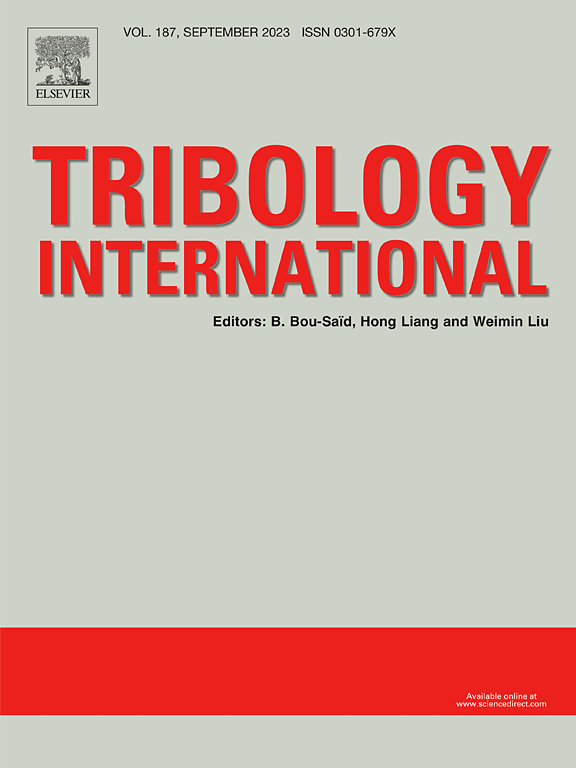受限摩擦接触中的各向异性收缩和有限应变
IF 6.1
1区 工程技术
Q1 ENGINEERING, MECHANICAL
引用次数: 0
摘要
我们报告了一项实验研究摩擦,接触几何形状和有限应变之间的相互作用在刚性球形玻璃探针和平面硅基板之间的光滑摩擦接触。在不同的载荷条件下(法向力,探头半径),我们发现剪切引起的粘接接触面积的各向异性收缩是有限弹性条件的影响,并受到几何约束水平的极大影响。通过测量在施加法向载荷(反向压痕深度)的条件下,在接触约束的强烈影响下,粘接接触在粘接过程中压痕深度(反向压痕深度)的变化,研究了法向和侧向之间产生的非线性耦合。通过与无黏着线性接触力学计算的比较,我们表明实验观察只能由有限应变/位移条件的出现来解释。因此,对橡胶基板表面的面内表面位移的测量证实,在稳态摩擦滑动期间,应变水平在新胡克范围内。本文章由计算机程序翻译,如有差异,请以英文原文为准。
Anisotropic shrinkage and finite strains in confined frictional contacts
We report on an experimental investigation of the interplay between friction, contact geometry and finite strains for smooth frictional contacts between rigid spherical glass probes and flat silicone substrates. Using both bulk and layered substrates under various loading conditions (normal force, radius of the probe), we show that shear-induced anisotropic shrinkage of the adhesive contact area under steady-state sliding is an effect of finite-elasticity conditions and is drastically affected by the level of geometric confinement. The resulting non-linear coupling between the normal and lateral directions is also investigated by measuring the changes in the indentation depth (conv. normal load) during the stiction of the adhesive contacts under imposed normal load (conv. indentation depth) conditions, with strong effects of contact confinement. From a comparison with adhesiveless linear contact mechanics calculations, we show that the experimental observations can only be accounted for by the occurrence of finite strains/displacements conditions. Accordingly, measurements of the in-plane surface displacements at the surface of the rubber substrates confirm that strain levels well in the neo-Hookean range are experienced during steady-state frictional sliding.
求助全文
通过发布文献求助,成功后即可免费获取论文全文。
去求助
来源期刊

Tribology International
工程技术-工程:机械
CiteScore
10.10
自引率
16.10%
发文量
627
审稿时长
35 days
期刊介绍:
Tribology is the science of rubbing surfaces and contributes to every facet of our everyday life, from live cell friction to engine lubrication and seismology. As such tribology is truly multidisciplinary and this extraordinary breadth of scientific interest is reflected in the scope of Tribology International.
Tribology International seeks to publish original research papers of the highest scientific quality to provide an archival resource for scientists from all backgrounds. Written contributions are invited reporting experimental and modelling studies both in established areas of tribology and emerging fields. Scientific topics include the physics or chemistry of tribo-surfaces, bio-tribology, surface engineering and materials, contact mechanics, nano-tribology, lubricants and hydrodynamic lubrication.
 求助内容:
求助内容: 应助结果提醒方式:
应助结果提醒方式:


